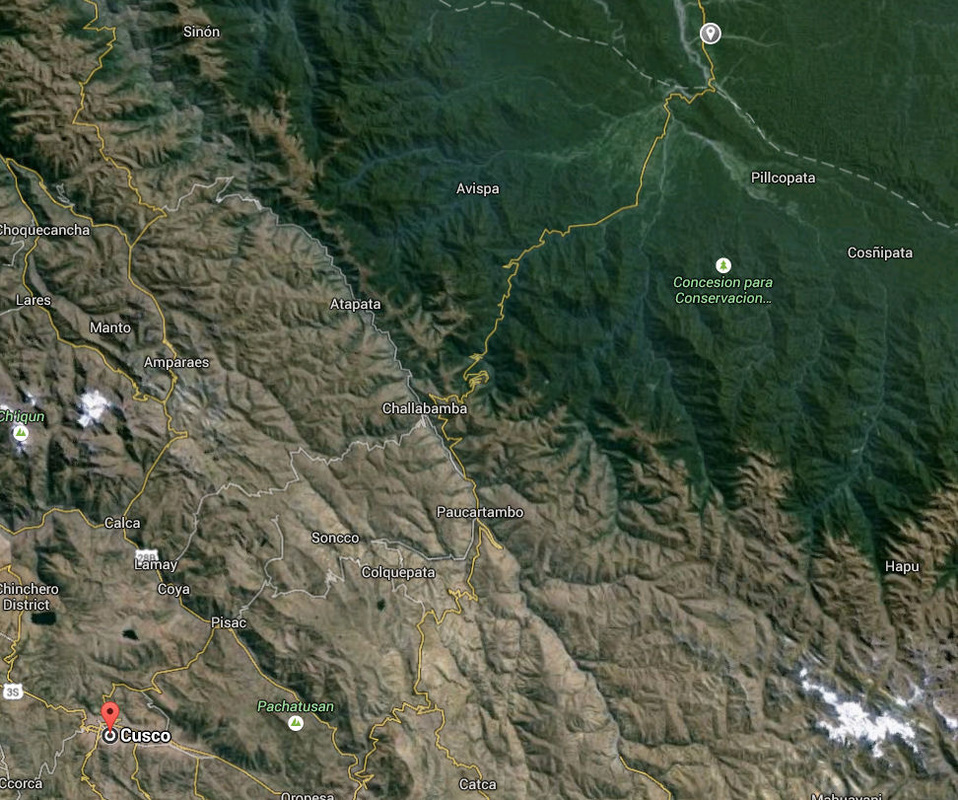Today, according to the itinerary, Taramandua and Jungle Fever fires start the long drive to Base camp by bus, just as the three week fires had done on the 26th, leaving Cusco at 4 am.
The road to Manu is famous for its sharp twists and turns and steep sides and passes through a number of Andean mountain villages, which will hopefully give some insight into the way the locals go about their daily life. Eventually the road will pass the gateway to the Manu National Park, and further still, beyond the Acjanaco Pass (3550 m / 11.647 ft) the environment will change dramatically to that of the misty cloud forest. The journey passes through settlements whose main economic activity has been logging in the past, and much of the valued wood in the area gone. It has been replaced by small scale commercial agriculture and some ecotourism as the main means of making a living today. Eventually the road reaches the Port of Atalaya. It continues beyond this point, though the National Park is not fully accessible by road. Most who visit the region continue their journey by boat along Upper Madre de Dios from Atalaya.
We imagine the team will get to base camp along this route, though we can only speculate as to where base camp actually is … some distance downstream of Atalya, along the Upper Madre de Dios and near its western shore!
Taramandua and Jungle Fever fires will spend four nights at Base Camp for “acclimatisation and training” before embarking on the next phase of the expedition on 2nd August.
Unless we receive information from British Exploring about the progress of the expedition (expecting that communication from the jungle will be unpredictable), we will put up a new post on 2nd to document the next phase on the itinerary of Angus adventure.
The road to Manu is famous for its sharp twists and turns and steep sides and passes through a number of Andean mountain villages, which will hopefully give some insight into the way the locals go about their daily life. Eventually the road will pass the gateway to the Manu National Park, and further still, beyond the Acjanaco Pass (3550 m / 11.647 ft) the environment will change dramatically to that of the misty cloud forest. The journey passes through settlements whose main economic activity has been logging in the past, and much of the valued wood in the area gone. It has been replaced by small scale commercial agriculture and some ecotourism as the main means of making a living today. Eventually the road reaches the Port of Atalaya. It continues beyond this point, though the National Park is not fully accessible by road. Most who visit the region continue their journey by boat along Upper Madre de Dios from Atalaya.
We imagine the team will get to base camp along this route, though we can only speculate as to where base camp actually is … some distance downstream of Atalya, along the Upper Madre de Dios and near its western shore!
Taramandua and Jungle Fever fires will spend four nights at Base Camp for “acclimatisation and training” before embarking on the next phase of the expedition on 2nd August.
Unless we receive information from British Exploring about the progress of the expedition (expecting that communication from the jungle will be unpredictable), we will put up a new post on 2nd to document the next phase on the itinerary of Angus adventure.













 RSS Feed
RSS Feed
